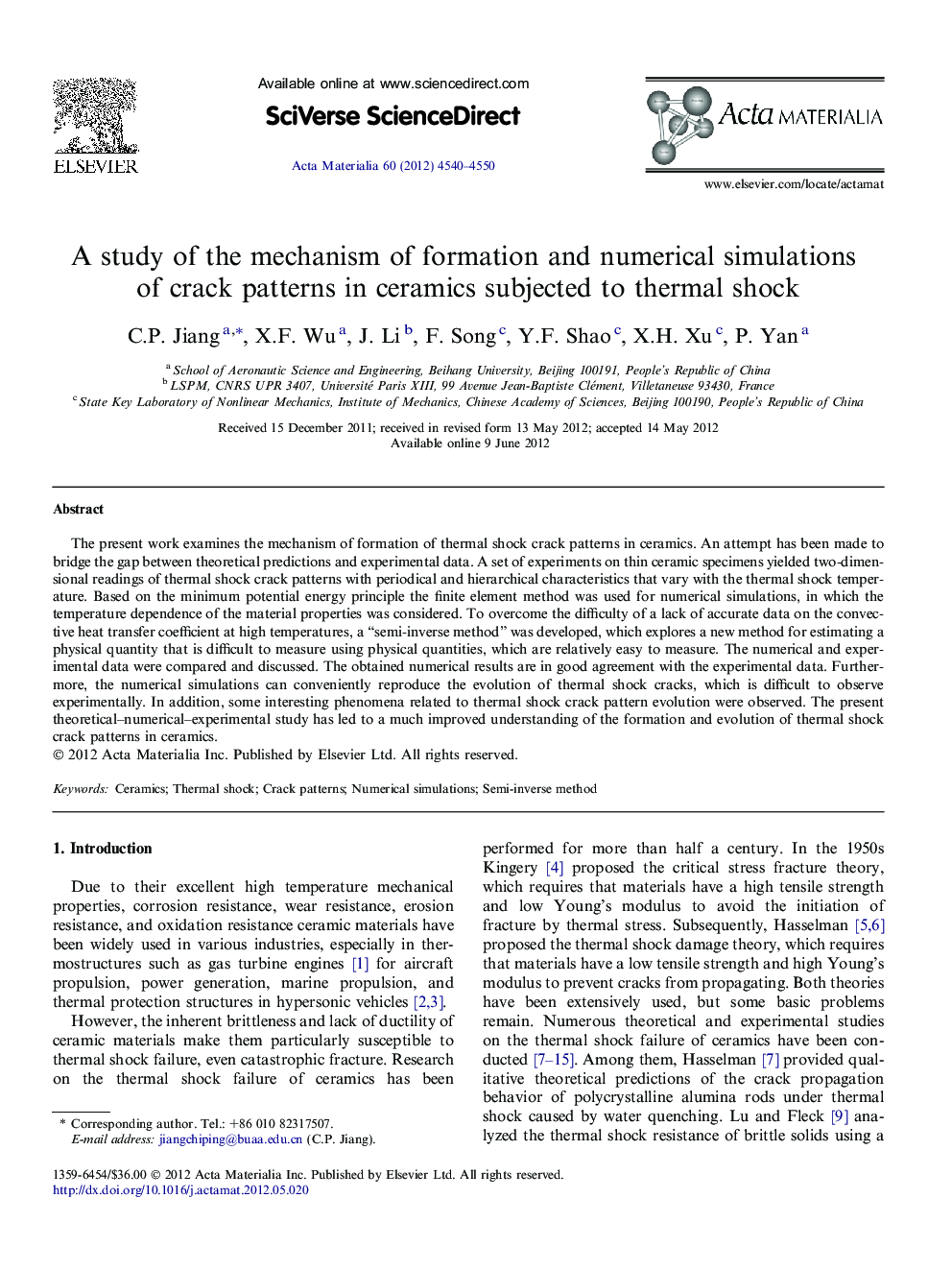| Article ID | Journal | Published Year | Pages | File Type |
|---|---|---|---|---|
| 1446636 | Acta Materialia | 2012 | 11 Pages |
The present work examines the mechanism of formation of thermal shock crack patterns in ceramics. An attempt has been made to bridge the gap between theoretical predictions and experimental data. A set of experiments on thin ceramic specimens yielded two-dimensional readings of thermal shock crack patterns with periodical and hierarchical characteristics that vary with the thermal shock temperature. Based on the minimum potential energy principle the finite element method was used for numerical simulations, in which the temperature dependence of the material properties was considered. To overcome the difficulty of a lack of accurate data on the convective heat transfer coefficient at high temperatures, a “semi-inverse method” was developed, which explores a new method for estimating a physical quantity that is difficult to measure using physical quantities, which are relatively easy to measure. The numerical and experimental data were compared and discussed. The obtained numerical results are in good agreement with the experimental data. Furthermore, the numerical simulations can conveniently reproduce the evolution of thermal shock cracks, which is difficult to observe experimentally. In addition, some interesting phenomena related to thermal shock crack pattern evolution were observed. The present theoretical–numerical–experimental study has led to a much improved understanding of the formation and evolution of thermal shock crack patterns in ceramics.
